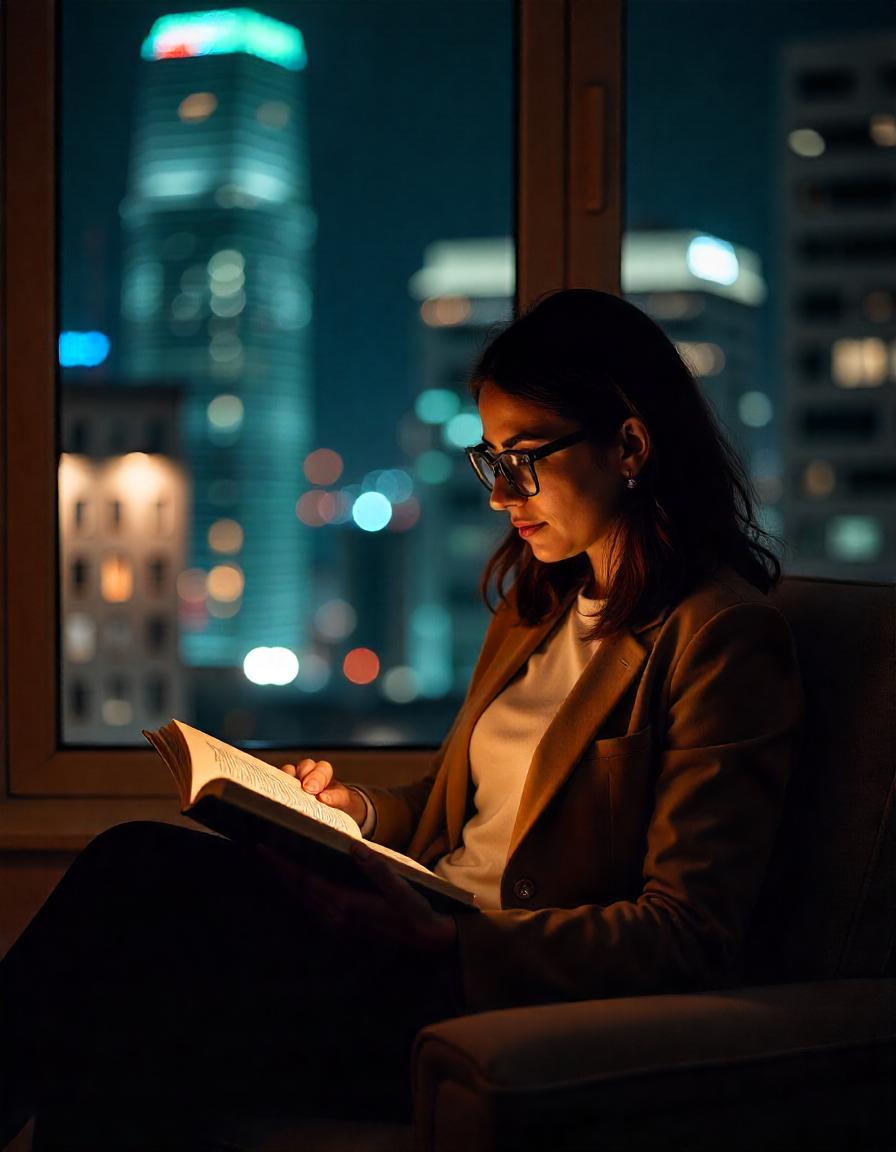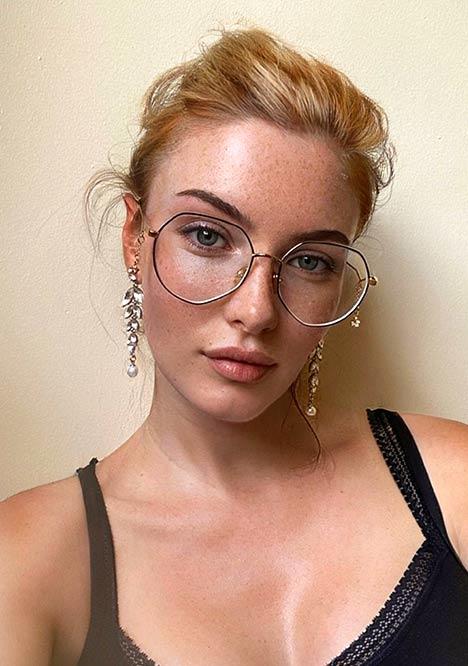Is Reading in the Dark Bad for Your Eyes?
We've all been there - completely absorbed in a great book when suddenly you notice it's gotten dark and you're squinting at the pages. Your parents probably warned you about reading in dim light, but is it really harmful to your eyes? Let me clear up the facts about reading in the dark and share some simple ways to protect your vision while enjoying those can't-put-it-down books.

How Your Pupil, Retina, and Eye Parts Adjust to the Dark
When the lights go down, here's what happens inside your eyes:
1. Your pupils, the black circles in the center of your eyes, get bigger (dilate) to let in more light. The iris, which is the colored part around the pupil, has muscles that make this happen.
2. More light hitting the retina means you can see better in the dark. The retina is like a screen at the back of your eye that captures light.
3. Rods and cones are cells in the retina that help you see. Rods are really good at picking up light, which helps you see when it's dark, but they don't catch details or colors well. That's why at night, you might see shapes but not what color they are.
4. The lens, sitting behind the pupil, also adjusts its shape trying to focus the dim light onto the retina. But since this isn't perfect, things can look blurry, especially small text up close.
All these changes mean your eyes are working overtime, which can lead to eyestrain, making reading or doing other close work in poor light a bit uncomfortable.
What Are the Immediate Effects of Reading in Poor Lighting?
Right when you start reading in dim light, your eyes might react with a few signs that they're not happy:
● Eyestrain kicks in first; your eyes feel worn out and maybe sore or scratchy.
● You might want to rub your eyes or blink a lot to try to see the words more clearly.
● Headaches can follow because your eye muscles are working overtime to make out what you're looking at.
● Your eyes and the areas around them, like your temples, may ache or feel pressured.
Do Reading in the Dark Have Long-Term Effects on Eye Health?
No, reading in the dark won't cause long-term damage to your eyes. Eye health experts agree that while dim lighting might lead to temporary eye discomfort, it doesn't have lasting effects.
When you read in a poorly lit room, your eyes have to strain to see the text, which can cause immediate symptoms like soreness, headaches, or blurred vision. This is your eyes telling you they're working too hard. Once you're back in better lighting, these symptoms usually fade away.
Research has looked into what happens when we read in the dark over long periods. The good news is, studies show there's no evidence that doing so leads to permanent eye damage or worsens eye health as time goes by. Our eyes are quite tough and can handle different levels of light without being damaged. But, if your eyes consistently feel uncomfortable due to bad lighting, it can make reading less enjoyable and affect how well you can see while you're doing it.
So, even though reading in low light isn't a threat to the health of your eyes in the long run, keeping a good light on while you read is still a smart choice to avoid any short-term discomfort and to make sure you're seeing as clearly as possible.
What Should You Do for Healthier Reading Habits?
1. Choose the Right Lamp and Bulb for Comfortable Reading
Proper lighting is essential when it comes to comfortable reading. It helps prevent eye strain and allows you to read for longer without discomfort. The benefits extend beyond comfort, too—good lighting can also help improve your focus and comprehension.
If you have vision problems, such as presbyopia, you can use reading glasses with the right prescription. Please consult a professional eye doctor to get the type of glasses that are right for you.
For better lighting:
● Choose lamps that are designed for reading. These often have an adjustable arm or head that lets you direct the light exactly where you need it.
● Opt for bulbs that mimic natural light, which is easier on the eyes than harsh white or yellow light. Make sure the light source is positioned behind you and directed onto the page to minimize glare.
2. Make Reading Easier with Font and Contrast Adjustments
When it comes to the actual act of reading, small tweaks can make a big difference in reducing eye strain.
For physical books and digital devices:
● Increase the font size so that you're not straining to read small text. This is especially easy on e-readers and tablets where a few taps can make text larger.
● Use good contrast to make words stand out against the background but avoid overly bright backgrounds that can cause glare. Dark text on a light (but not white) background is usually best.
3. Reduce Glare and Eye Strain with Anti-Reflective Glasses
Protective eyewear isn't just for outdoor activities or lab work—it can also be a crucial tool for readers.
About anti-reflective glasses:
● Anti-reflective glasses can significantly reduce glare from both natural and artificial light, making it easier to read text on both paper and screens.
● They're particularly useful if you spend a lot of time reading on screens. The anti-reflective coating reduces glare from the screen and can help reduce digital eye strain.
To use protective eyewear effectively:
● Wear them consistently when reading, especially if you notice symptoms of eye strain.
● Make sure they fit well and that the glass lenses are kept clean for clear vision.

How to Maintain Good Eye Health Even When Not Reading
1. Regular Breaks Help Keep Your Eyes Fresh
To avoid eye fatigue, it's crucial to take regular breaks during any activity that requires intense focus. The 20-20-20 rule is a simple method to remember: every 20 minutes, take a 20-second break and focus on something 20 feet away. This brief pause can help reduce the strain on your eyes from prolonged reading or screen time.
2. Regular Eye Check-Ups Are Essential for Eye Health
Regular eye exams are vital for maintaining overall eye health. An eye doctor can catch issues early on, which is essential for the treatment and prevention of more serious conditions. Adults should aim for an eye exam at least every two years, while children or individuals with existing eye issues might need to go more frequently.
3. Eat Right and Stay Hydrated for Better Eye Function
Your diet also impacts your eye health. Nutrients like vitamins A, C, and E, along with minerals like zinc, are important for maintaining eye health. Foods rich in these nutrients include carrots, leafy greens, seeds, nuts, and fish. Staying hydrated is equally important; sufficient fluid intake helps maintain the moisture level of your eyes, preventing dryness and irritation. Aim to drink enough water throughout the day to keep your body—and by extension, your eyes—well-hydrated.
Keep Your Eyes Happy: Simple Steps for Readers
There's no need to worry about the old myth that reading in dim light can ruin your eyes. The truth is a bit easier on the mind: while it's not the best for comfort, it won't cause lasting damage. For those long stretches lost in a book or scrolling through your tablet, remember to shine a good light, tweak your text size and background, and maybe even pop on some anti-glare glasses.
Don't forget to blink, break, and peek into the distance every now and again with the trusty 20-20-20 rule. And of course, keep those eye check-ups on your calendar and your diet eye-friendly. With these simple habits, you’re all set for many more pages to turn, screens to swipe, and stories to explore—easy on the eyes.




















